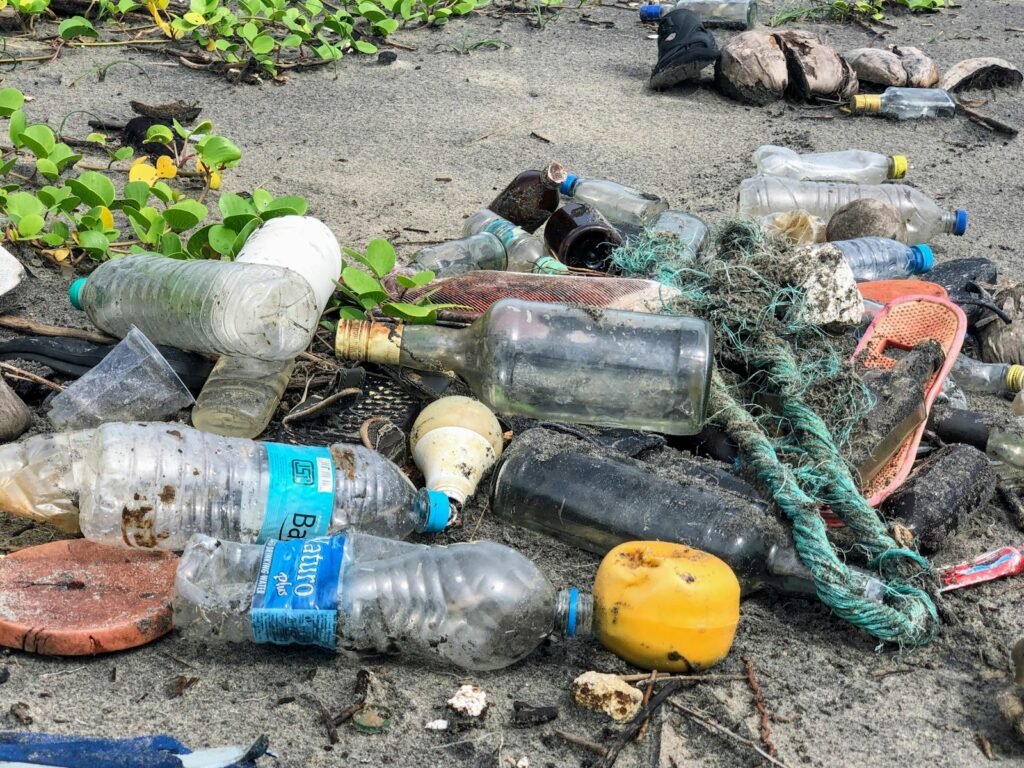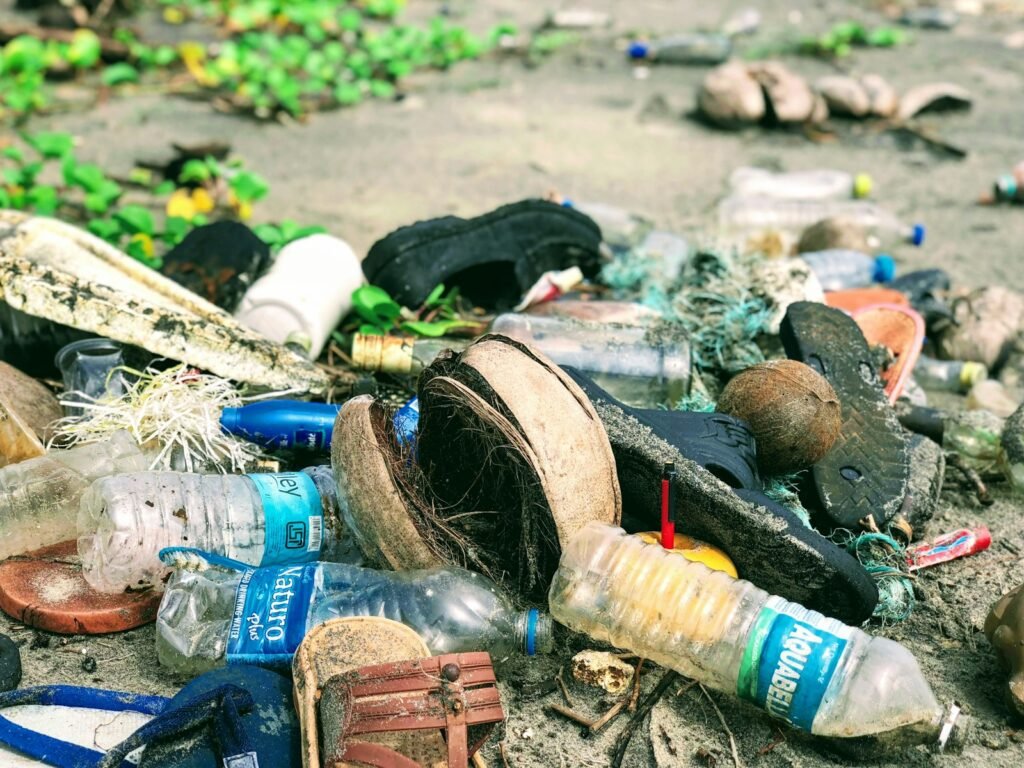Living sustainably as a student isn’t about buying expensive eco-products or moving into a solar-powered tiny house. It’s about making smarter choices with what you already have, reducing waste, and thinking ahead—without sacrificing the energy, time, or freedom that come with being a student.

You’re in a unique position. You’re learning, growing, and forming habits that will shape your life. The small, consistent actions you take today—like refusing a plastic straw or reusing a coffee cup—accumulate into real environmental impact. Plus, many of these habits save money, reduce clutter, and even improve your daily routine.
This guide walks you through seven actionable, low-pressure ways to live more sustainably without needing a degree in environmental science or a six-figure income.
1. Ditch Single-Use Plastics—Start with What You Carry
Plastic waste is one of the most visible and persistent problems in our environment. Every year, billions of plastic bottles, bags, and cups end up in landfills or oceans. As a student, you’re likely consuming drinks, snacks, and takeout daily—creating a steady stream of disposable waste.
The fix? Carry a few reusable essentials in your backpack or pocket.
Keep a refillable water bottle with you at all times. Fill it at a campus fountain, tap, or kitchen sink. Bring a reusable coffee cup when you grab a morning brew. Use a foldable tote bag for groceries or library books—tuck it into your bag when not in use.
These aren’t just eco-friendly moves. They’re practical. You’ll avoid buying bottled water every week. You’ll skip the extra charge at coffee shops. And you’ll have something to show for your effort—literally.
Start small: pick one item to bring with you today. Next week, add another. In a month, you’ll be part of the solution, not the problem.
2. Pack Your Lunch with Reusables—Not Plastic
It’s easy to grab a sandwich in a plastic wrapper, a salad in a styrofoam container, or a snack in a sealed bag. But these choices add up fast—especially when you’re eating out three times a day.
The alternative? Pack your meals using reusable containers, silicone bags, or even a lunchbox made from bamboo or recycled materials.
You don’t need fancy gear. A simple set of stackable containers with lids works perfectly. Use a cloth napkin instead of paper towels. Store leftovers in airtight containers so they last longer and don’t go bad.
This approach does more than cut down on waste. It helps you eat healthier, control portion sizes, and avoid the high cost of daily takeout. It also gives you one less thing to worry about on a busy morning—no more rushing to find a place to eat.
Try it for one week. Notice how much less trash you generate. Then make it a habit.
3. Think Before You Buy—Especially What You Don’t Need
Student life is full of new things: textbooks, clothes, gadgets, decor. Many of these are bought on impulse, often from fast fashion or low-quality brands designed to be replaced in weeks.
This cycle is wasteful. It drives overproduction, increases pollution, and wastes your money.
Instead, pause before every purchase. Ask: Do I really need this? Can I borrow it? Is it secondhand? Could I use what I already own?
Textbooks are a prime example. Instead of buying a new one, check if your library has a copy, or ask classmates if they’re willing to share. Join a textbook swap group or use a digital version if available.
Clothing is another big one. Wait before buying. Check if you can find something similar at a thrift store, a campus swap, or a local resale shop. A single used item can save hundreds of gallons of water and avoid tons of carbon emissions.
Even small purchases—like a new notebook or a pair of socks—add up. Choose quality over quantity. Build a wardrobe and a collection of supplies that last.
4. Turn Off the Lights, Unplug the Devices
Dorms and shared apartments often feel like energy wastelands. Lights left on, chargers plugged in 24/7, fans running while you’re in class—these small habits add up to unnecessary electricity use.
The average student consumes more energy per square foot than most homes. But you don’t need to live like a monk to make a difference.
Start with one simple rule: If you’re not using it, unplug it. Use a power strip for your desk or bedside setup. Turn it off when you leave the room. That one habit can cut down on “phantom load”—the electricity used by devices even when they’re off.
Switch to LED bulbs if possible. They last longer, use less power, and produce less heat. Turn off lights when you leave a room. Open blinds during the day instead of flipping on the overhead light.
These actions don’t cost anything. They require only a moment of awareness. But over time, they reduce your carbon footprint and may even lower your shared electricity bill.
5. Reduce Food Waste with Intention
Food waste is a massive environmental issue. Globally, nearly a third of all food produced is lost or wasted. For students, this often means buying too much, forgetting about leftovers, or letting food spoil in the fridge.
The fix? Plan your meals and shop with purpose.
Start by checking what you already have in your fridge, pantry, or freezer. Make a quick list before you go shopping. Stick to it.
Use your leftovers creatively. Turn last night’s rice into a stir-fry. Blend old vegetables into a soup. Add wilted greens to a smoothie.
If you’re eating out, take home any uneaten food in a reusable container. Don’t let it go to waste.
This isn’t just about being eco-conscious—it’s about being smarter with your money. Wasted food is wasted money. By planning ahead and using what you have, you save both.
6. Choose Your Mode of Transport Wisely
Getting to class, the library, or a friend’s place is part of daily life. But the way you get there matters—especially for the planet.
Cars, especially gas-powered ones, produce significant emissions. But you don’t need a car to get around campus or nearby neighborhoods.
Walk. It’s free, healthy, and zero-emission. Even a 10-minute walk between classes can make a difference.
Bike. Many campuses have bike-sharing programs, or you can buy a used bike secondhand. It’s faster than walking, doesn’t require parking, and gets you exercise.
Take public transit. Buses, trains, and shuttles carry many people at once, reducing per-person emissions.
Carpool with friends. Share rides to events or weekend trips. It cuts down on traffic and emissions.
Even small shifts in your routine—like walking to the library instead of driving—add up over time. You’ll save money, reduce your carbon footprint, and enjoy more movement during the day.
7. Join the Movement—Even If You’re Just One Person
Sustainability isn’t just an individual effort. It becomes powerful when people come together.
Your campus likely has student groups, green offices, or sustainability initiatives. You don’t have to lead one to participate.
Attend a campus clean-up. Volunteer for a tree planting day. Join a recycling or composting campaign. Ask about sustainability policies on campus.
Even small actions—like bringing a reusable cup to a student event—send a message. When others see you doing it, they may start too.
You don’t need to be perfect. You just need to show up. Every voice counts. Every choice matters.
You Don’t Need to Be Perfect—Just Consistent
Living sustainably as a student isn’t about making life harder. It’s about making it better—healthier, cheaper, and more intentional.
You don’t need a full-time green lifestyle to make a difference. Start with one change. Master it. Then add another.
The goal isn’t perfection. It’s progress. It’s awareness. It’s building habits that protect the planet while fitting into your real life—your schedule, your budget, your student experience.
You’re not just surviving college. You’re shaping a future that’s more thoughtful, more fair, and more sustainable.
Now go refill your bottle. The planet—and your wallet—will thank you.







